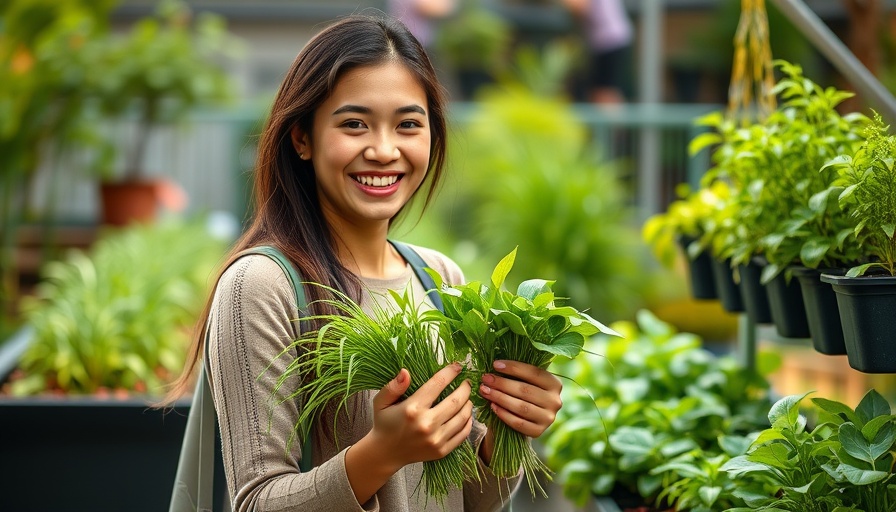
The Heat is On: Understanding Plant Water Needs
As temperatures rise in the beautiful Okanagan Valley, many gardeners face a common challenge: keeping their plants hydrated. The region's dry climate means that plants can quickly succumb to the heat, wilting or even dying if not cared for properly. Inadequate watering practices are a frequent concern, and understanding the specific water requirements of different plants is essential for any gardener aiming for a lush garden.
In 'Do NOT Let Plants Wilt', the discussion dives into the importance of keeping plants hydrated, exploring key insights that sparked deeper analysis on our end.
Most plants thrive when they receive adequate moisture, especially during the hotter months. In fact, wilting is often not just a sign of thirst; it can be a call for help. When plants begin to droop, it's an indicator of stress that could lead to diminished growth or flower production. To prevent this, gardeners must learn to observe their plants closely and recognize the signs of dehydration early.
The Role of Soil and Mulching
Another key aspect of plant care that every gardener should consider is soil health. The type of soil can greatly influence how effectively plants retain moisture. Sandy soils tend to drain quickly, making them easier to dry out, while clay soils can retain water but may become compacted, hindering proper drainage.
One effective solution to combat water loss is mulching. Applying a layer of organic mulch not only adds nutrients to the soil but also helps regulate temperature and humidity levels. This preventative measure can significantly reduce the frequency of watering needed, keeping plants healthy and vibrant throughout the growing season.
Gardening Solutions for the Okanagan Climate
Given the unique climate of the Okanagan, including hot summers and chilly winters, it's essential to choose drought-resistant plants that can withstand fluctuations in moisture availability. Native plants, such as sagebrush, are well adapted to local conditions and can thrive with minimal watering. Incorporating these plants into your garden can reduce the amount of water needed while supporting local biodiversity.
Furthermore, utilizing drip irrigation or soaker hoses can provide a steady supply of water directly to the plant roots, reducing water waste and improving overall efficiency. This method ensures that water penetrates the soil deeply, encouraging robust root growth and reducing the risk of surface runoff.
When to Water: Timing Matters
Timing your watering sessions is crucial for effective plant care. Early morning or late afternoon are ideal times to water, as evaporation rates are lower, allowing more moisture to reach the roots. Watering in the evening can lead to fungal problems, as moisture may linger on the plant surfaces overnight.
Moreover, adjusting your watering schedule as the seasons change is vital. In spring and autumn, plants may require less water due to cooler temperatures, while the peak summer months will call for increased attention to hydration.
Signs Your Plants Need Water
So how do you know when your plants are truly thirsty? Besides the obvious wilting, a few other signs can indicate potential water stress:
- Dry, crumbly soil: When the top layer shows signs of dryness, it’s time to water.
- Yellowing leaves: This can be a sign of inadequate water or nutrient deficiency.
- Stunted growth: Lack of hydration can hinder plant growth, making leaves smaller and less vibrant.
Embrace Sustainable Gardening Practices
Adopting sustainable practices not only benefits your garden but also the environment. Collecting rainwater for irrigation and utilizing greywater systems can significantly reduce water usage. Implementing these methods can make a gardener more resilient to climate changes and water scarcity challenges.
Additionally, incorporating companion planting and allowing beneficial insects to thrive can create a healthier ecosystem in your garden, reducing the need for chemical interventions and boosting overall plant vitality.
In summary, keeping your garden flourishing during the hot months requires knowledge and attention to detail. By understanding plant needs, optimizing soil health, and implementing smart watering strategies, Okanagan gardeners can nurture a vibrant, thriving garden that withstands the heat.
Take Action: Revive Your Garden
Now is the time to put these strategies into action! Start by evaluating your garden's current hydration needs and exploring sustainable practices that can preserve water and enhance plant health. Whether you’re a seasoned outdoor enthusiast or just beginning your gardening journey, taking care of your plants can open a window to a healthier and more connected lifestyle in the beautiful Okanagan Valley.
 Add Row
Add Row  Add
Add 




Write A Comment